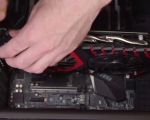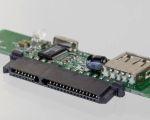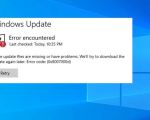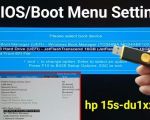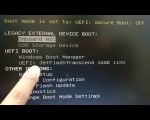How to Repair Sound on My Computer: Step-by-Step Troubleshooting Guide
- 1. Identifying the Root Cause of the Problem
- 2. Checking the Basic Sound Settings
- 3. Updating or Reinstalling Audio Drivers
- 4. Using Windows Troubleshooter to Fix Sound Issues
- 5. Verifying Hardware Connections and Sound Settings
- 6. When to Seek Professional Help
1. Identifying the Root Cause of the Problem
When I first encountered sound issues on my computer, I was completely frustrated. I tried everything I could think of: restarting the computer, turning the volume up, and checking for updates, but nothing worked. As I dug deeper into the problem, I realized the first step in fixing sound issues is identifying the root cause. There are a variety of reasons why sound may not be working on a computer. Sometimes it's as simple as a muted volume or a loose cable, but other times, it can be related to issues with the audio drivers, operating system settings, or even hardware problems. By narrowing down the potential causes, I was able to quickly pinpoint the issue and work on fixing it. Here are the key areas to check when troubleshooting: Is the volume muted or set too low? Are the correct audio devices selected? Are there any audio driver conflicts or updates needed? Is there a hardware malfunction like faulty speakers or headphones?2. Checking the Basic Sound Settings
Once I realized that the problem wasn’t hardware-related, I turned my attention to the computer’s sound settings. It might seem like a simple thing to check, but sometimes the solution is right in front of you. I checked to make sure the volume was turned up and that the speakers or headphones were properly connected. For Windows users, here's how I usually check the basic sound settings: Click the speaker icon on the bottom-right corner of your screen to see if the volume is turned up. Open Sound Settings: Right-click the speaker icon and select 'Open Sound Settings'. Ensure the correct output device (like speakers or headphones) is selected. Check the Playback Devices: If multiple audio devices are connected, such as headphones and speakers, ensure that the right one is set as the default. If the volume was set correctly and the audio output was configured properly but the sound was still not working, I moved on to the next step.3. Updating or Reinstalling Audio Drivers
Updating or reinstalling audio drivers was a crucial step for me in fixing the sound issue. Audio drivers allow your computer to communicate with the sound hardware, so if they are outdated, corrupt, or incompatible, your sound may stop working. Here’s how I updated my audio drivers: Open Device Manager: I typed “Device Manager” in the Windows search bar and opened the app. Locate Sound, Video and Game Controllers: I expanded this section, found my audio device, right-clicked on it, and selected “Update Driver”. Search for Updates: I chose the option to search automatically for updated driver software, and Windows handled the rest. Reinstalling Drivers: If updating didn’t work, I right-clicked on the audio device in Device Manager, uninstalled it, and then restarted the computer. Upon reboot, Windows automatically reinstalled the driver. Sometimes, finding the correct driver from the manufacturer’s website is necessary, especially if you’ve recently upgraded your operating system. Once the drivers were updated or reinstalled, I tested the sound again to see if the issue was resolved.4. Using Windows Troubleshooter to Fix Sound Issues
I was skeptical at first, but using Windows built-in Troubleshooter actually solved my sound problem. This tool is designed to automatically detect and fix common sound problems. To run the Troubleshooter, I followed these steps: Go to Settings: I clicked on the Start menu and then opened Settings. Troubleshoot: Under "Update & Security," I selected “Troubleshoot,” and then clicked on “Additional Troubleshooters.” Run the Audio Troubleshooter: I selected “Playing Audio” and clicked “Run the Troubleshooter.” It took a few minutes, but the tool detected a minor issue with the audio settings and fixed it automatically. If your sound issues are related to software, running the Troubleshooter is a great first step before diving into more technical solutions.5. Verifying Hardware Connections and Sound Settings
After troubleshooting the software side of things, I took a step back and double-checked the physical hardware. Sometimes the issue could be as simple as loose cables or improper connections. I made sure that all cables were securely connected to the computer, speakers, and any external audio devices. Additionally, I checked the sound settings on any external audio devices like speakers or headphones. If you’re using Bluetooth audio devices, make sure they are paired correctly with your computer and that the Bluetooth settings are enabled.6. When to Seek Professional Help
If after all these troubleshooting steps the sound still isn’t working, it might be time to seek professional help. This could mean visiting a computer repair shop or contacting customer support for your computer brand. Sometimes the issue could be a hardware malfunction or a deeper software conflict that requires expert intervention. Personally, I reached out to a computer repair professional once when I realized that my laptop’s sound card had malfunctioned and needed replacement. It was the only way to get my sound back to normal.If you’re still having issues and need a reliable professional to help, I highly recommend checking out services at Computer Repair for fast and expert help.













